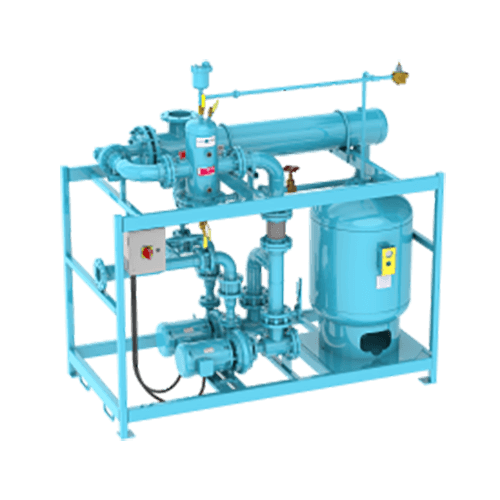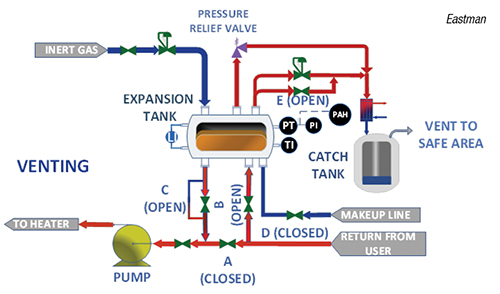Developments in Heat Transfer Solutions: What You Required to Know for Optimal Efficiency
Advancements in Heat transfer systems are changing efficiency throughout various markets. Advanced products like graphene and nanofluids guarantee significant enhancements in thermal conductivity. On the other hand, the integration of IoT and artificial intelligence supplies possibilities for real-time tracking and boosted power performance. Nonetheless, the landscape of thermal management is quickly evolving (DVS Heat Transfer Systems). Recognizing these advancements is vital for achieving optimal system efficiency and sustainability in the future. What specific developments are shaping this improvement?
Arising Materials for Boosted Heat Transfer

Advanced Heat Exchanger Designs
While standard Heat exchangers have offered their objective in numerous applications, advanced layouts are now arising to fulfill the increasing demands for performance and efficiency. These ingenious designs, such as plate, shell-and-tube, and finned-tube Heat exchangers, incorporate improved surface and boosted circulation patterns to raise thermal transfer rates. On top of that, portable layouts permit minimized room needs without jeopardizing efficiency. Advanced materials, such as composites and corrosion-resistant alloys, furthermore boost toughness and efficiency under severe problems. Furthermore, simulation technologies and computational fluid characteristics are significantly utilized to fine-tune these styles, guaranteeing peak Heat transfer attributes. As industries seek to reduce energy intake and maximize outcome, the fostering of innovative Heat exchanger designs is essential in accomplishing these goals.
The Function of Nanotechnology in Heat Transfer
Nanotechnology plays an important duty in improving thermal conductivity within Heat transfer systems. By manipulating products at the nanoscale, scientists have attained significant enhancements in power performance. These innovations not just enhance efficiency but likewise contribute to more lasting power options.
Boosted Thermal Conductivity
Substantial innovations in thermal conductivity have emerged with the application of nanotechnology, changing Heat transfer systems across numerous markets. By integrating nanoparticles right into Heat transfer fluids and materials, scientists have actually attained remarkable boosts in thermal conductivity. These nanoparticles, such as carbon nanotubes, graphene, and steel oxides, enhance the Heat transfer properties due to their high area and distinct thermal attributes. The resulting composites show enhanced efficiency in applications varying from electronics cooling down systems to eco-friendly power modern technologies. The ability to customize the size, shape, and structure of nanoparticles enables for enhanced thermal administration solutions. Because of this, nanotechnology proceeds to play a crucial role in the growth of more efficient and reliable Heat transfer systems, leading the way for improved industrial applications.
Energy Performance Improvements

Integration of IoT in Heat Transfer Systems
The combination of IoT in Heat transfer systems introduces the application of clever sensors that enhance functional effectiveness. These sensors make it possible for real-time information surveillance, enabling immediate modifications and optimizations. This technological development has the possible to significantly improve efficiency and energy management in Heat transfer applications.
Smart Sensors Execution
As Heat transfer systems evolve, the assimilation of wise sensors with the Internet of Points (IoT) has actually arised as a transformative method. These sensing units allow real-time tracking of temperature level, stress, and flow prices, enhancing system effectiveness and dependability. By gathering and sending information, they assist in proactive upkeep, lowering the danger of system failings. Furthermore, wise sensing units add to power financial savings by refining operational parameters based upon environmental problems. Their capability to assess fads and anomalies permits informed decision-making, guaranteeing peak performance of Heat transfer systems. As industries increasingly embrace this innovation, the implementation of wise sensors stands to revolutionize just how Heat transfer systems are managed, leading the method for higher sustainability and boosted efficiency end results.
Real-Time Information Surveillance
Just how can real-time information checking boost the efficiency of Heat transfer systems? By integrating Internet of Things (IoT) technology, Heat transfer systems can utilize continual data collection from smart sensing units. This real-time tracking permits prompt evaluation of temperature level, pressure, and flow prices, allowing drivers to recognize inadequacies immediately. Adjustments can be made to maximize efficiency, lower energy usage, and pop over here prolong tools life expectancy. Furthermore, predictive upkeep can be carried out, reducing unanticipated downtime and costly fixings. The capacity to visualize efficiency metrics through control panels improves decision-making, fostering an aggressive technique to system monitoring. Eventually, real-time data monitoring not only boosts functional performance yet additionally adds to sustainability objectives within industrial processes.
Energy Performance and Sustainability Trends
Energy performance and sustainability trends are improving the landscape of Heat transfer systems, driving development and conformity across various industries. Organizations are significantly focusing on energy-efficient styles to decrease operational prices and decrease environmental impacts. The assimilation of eco-friendly energy resources is becoming a lot more prevalent, allowing Heat transfer systems to run sustainably while fulfilling regulative requirements. In addition, developments in materials and technologies promote lower energy consumption and improve total performance. Lifecycle analyses are additionally gaining traction, enabling companies to examine the environmental impact of Heat transfer systems from production to disposal. This concentrate on sustainability not just sustains corporate obligation yet also placements organizations competitively in a market where customers progressively prefer environment-friendly options. Power effectiveness and sustainability continue to be crucial factors to consider for future developments in Heat transfer technology.
Technologies in Thermal Management Solutions
While the demand for efficient Heat transfer continues to climb, advancements in thermal management solutions are arising to attend to both performance and sustainability obstacles. Advanced materials, such as phase modification materials and nanofluids, are Discover More Here being developed to enhance Heat transfer efficiency - DVS Heat Transfer Systems. These products boost thermal conductivity and permit for better temperature guideline in different applications. Additionally, modern technologies like energetic thermal control systems are obtaining traction, allowing real-time adjustments to handle Heat circulation effectively. These systems add to energy cost savings and decrease the ecological effect of thermal procedures. The assimilation of IoT in thermal administration facilitates monitoring and predictive maintenance, making sure optimized efficiency and long life of Heat transfer systems. On the whole, these innovations stand for significant strides towards even more lasting thermal monitoring practices
Future Directions in Heat Transfer Technology
Emerging advancements in thermal administration solutions indicate an appealing future for Heat transfer modern technology. Researchers are increasingly concentrating on establishing products with premium thermal conductivity and improved energy performance. Developments such as nanofluids, which have put on hold nanoparticles, provide considerable enhancements in Heat transfer performance. In addition, the integration of clever materials that adjust to varying temperature level problems is gaining grip, enabling more effective and receptive systems. The surge of additive production techniques is also enabling the design of complex Heat exchanger geometries that optimize fluid circulation. The application of equipment understanding formulas is anticipated to change the optimization of Heat transfer systems, promoting anticipating upkeep and performance improvement. Jointly, these advancements are poised to transform the landscape of Heat transfer modern technologies in different sectors.

Frequently Asked Concerns

How Do I Select the Right Heat Transfer System for My Application?
Picking the appropriate Heat transfer system involves evaluating application needs, consisting of temperature arrays, liquid homes, and performance needs. Evaluating system types, upkeep factors to consider, and cost-effectiveness likewise plays a necessary role in making a notified choice.
What Are the Upkeep Demands for Advanced Heat Exchangers?
Maintenance requirements for advanced Heat exchangers usually include normal assessments, keeping an eye on for leakages, cleaning of surfaces, and ensuring suitable flow prices. Abiding by producer guidelines guarantees Clicking Here efficient procedure and lengthens the devices's lifespan.
How Do Ecological Factors Impact Heat Transfer Effectiveness?
Ecological factors substantially affect Heat transfer performance. Variations in temperature level, air movement, and humidity effect thermal conductivity and convective Heat transfer, eventually impacting system efficiency and requiring factor to consider during the style and operation of Heat transfer systems.
What Safety And Security Requirements Relate To Heat Transfer Solutions?
Safety and security criteria for Heat transfer systems usually consist of standards from companies such as ASME and ASTM. DVS Heat Transfer Systems. These standards address products, design, and operational techniques to ensure dependability, performance, and security versus hazards in numerous applications
Exactly How Can I Troubleshoot Usual Heat Transfer System Issues?
Fixing usual Heat transfer system concerns involves examining for leakages, guaranteeing proper fluid flow, evaluating insulation stability, and validating temperature level differentials. Recognizing these factors can help preserve system performance and stop further difficulties.
Nanotechnology plays an important duty in improving thermal conductivity within Heat transfer systems. Considerable developments in thermal conductivity have arised through the application of nanotechnology, transforming Heat transfer systems throughout different industries. Developments in thermal conductivity with nanotechnology have led the method for exceptional enhancements in energy performance within Heat transfer systems. Power effectiveness and sustainability trends are reshaping the landscape of Heat transfer systems, driving innovation and compliance throughout different industries. The combination of IoT in thermal management helps with monitoring and predictive maintenance, making sure maximized efficiency and longevity of Heat transfer systems.